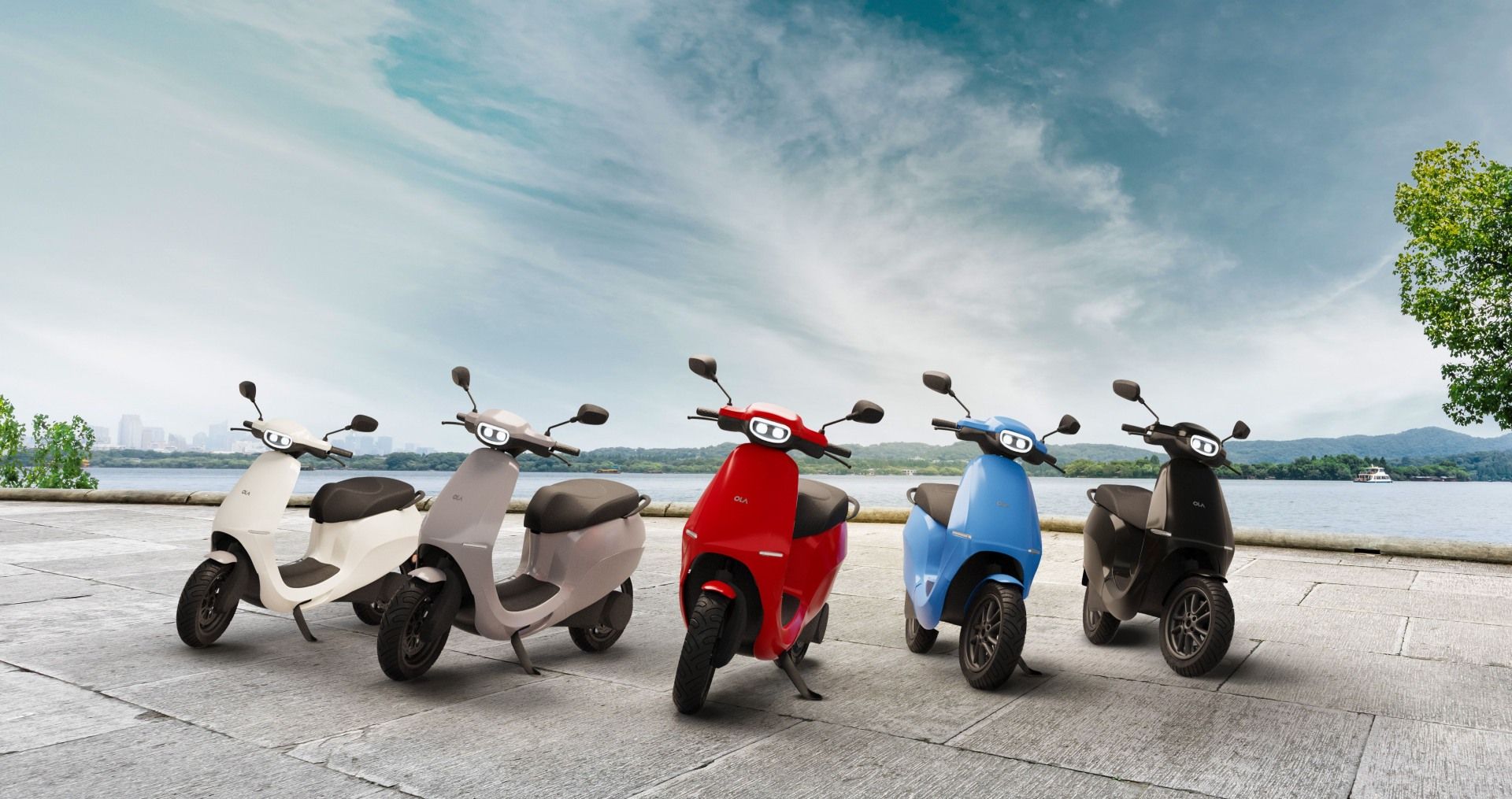New Rules and Regulations
Authors: Alexandra Mussina
For the last decade, the increased urbanisation of Kazakhstan cities accumulated the demand for affordable mobility options for citizens. Accessible technologies like e-scooters became a solution, yet the regulation remained partially controversial. In this article, Unicase experts elaborate on the key milestones of Kazakhstani legal regulation of e-scooters as the main micro-mobility transport popularised by kick-sharing companies.
Overview
In largest cities, over 85% of shared scooter trips follow the transport scenario[1]. From 2024 to 2029, there is an expected 3.67% annual growth rate, reflecting a significant trend towards motor vehicles and electric scooters that is reshaping urban landscapes globally. This will further lead to a shift in the market with an increase to a market volume of US$7.39m by 2029[2].
This technological progress not only promotes efficient and sustainable urban transportation but also aligns with achieving sustainable development goals for a greener future. However, these advancements come with challenges, particularly due to insufficient scooter infrastructure. Presently, Kazakhstan has only 500 km of bicycle paths, emphasising the need for robust legislative solutions to enhance citizen safety[3].
Casualty Statistics
Accidents and injuries involving electric scooters is a growing concern with the rapid industry. According to the Ministry of Internal Affairs, since the beginning of 2024, 24 accidents involving electric scooters have been reported, resulting in 2 deaths and 22 injuries (most of them being children), and 9,195 driver have been brought to administrative responsibility[4]. However, accurate reporting of scooter-related incidents remains a challenge as well, and the real numbers may be different.
New laws, Policies, and Regulation
According to Article 57 of the Law of the Republic of Kazakhstan No. 194-V «On Road Traffic» (“Rules”) dated 17 April 2014, electric scooter drivers are required to know and adhere to the traffic rules established by the authorised body. On 29 June 2023, Kazakhstan adopted the Law No. 12-VIII «On Amendments and Additions to Certain Legislative Acts of the Republic of Kazakhstan on Road Traffic Organization Issues» (Law), bringing several amendments for the enhancement of legislation on e-scooters[5]. This Law was partially implemented on 30 August 2023, as its full enforcement has taken place since 31 December 2023. Electric scooters recognised as full-fledged vehicles, and a new concept of “small electric vehicle” has been introduced, indicating its technical characteristics, legal regulation of the operating procedure and establishing a list of prohibitions for drivers[6]:
● The maximum speed of the electric scooter should not exceed 25 km/h;
● Driving on a sidewalk or other pedestrian space is allowed at a speed of no more than 6 km/h;
● Scooters must move along a bicycle path or bicycle lane. In their absence, driving along the right edge of the roadway is allowed, in compliance with the Rules;
● It is prohibited to drive while crossing the street on a pedestrian crossing;
● To drive on the roadway, the driver must be 18 years of age and have a driver’s licence to drive a vehicle of any category;
● The driver can only go out on the road wearing a fastened helmet;
● Driving at night, the driver must have a reflective object to ensure its visibility to drivers of other vehicles;
● Driving without holding the steering wheel with at least one hand is prohibited; and
● Scooters are prohibited from carrying passengers and cargo; tandem riding is prohibited.
Administrative Liability
The legislative framework addresses liability for accidents involving scooters. An e-scooter driver violating the Rules is responsible under the Administrative Code. For the transportation of passengers and cargo (Article 593 of the Code of Administrative Offences, a fine of 5 MCI[7] — KZT 18,460; about USD 40), as well as for violation of other requirements imposed on road users (Article 620 of the Code of Administrative Offences), a warning or a fine (3 MCI — KZT 11,076; about USD 25). Inflicting harm to life and health may result in the criminal responsibility for drivers. Moreover, legislation does not provide any requirements for e-scooter vehicle registration or any identifying number, which does not contribute to resolving the struggles of the law enforcement.
Torts
Entities or individuals engaged in activities involving increased danger, including transport organisations, industrial enterprises are liable for compensating harm unless it proves force majeure or the victim’s intent[8]. According to Article 931 of the Civil Code[9]legal entities and citizens whose activities are associated with increased danger to others (owners of vehicles, etc.) are obliged to compensate for the harm caused by a source of increased danger (such as vehicles) unless they prove that the harm arose as a result of force majeure or the victim’s intent. Each situation must be considered individually when it comes to force majeure, taking into account all the factual circumstances and the entire situation. Owners of sources of increased danger shall bear joint liability for damage caused as a result of interaction of sources (collision of vehicles, etc.) to third parties on the grounds provided for by Article 931.1.
For damage caused to a minor under fourteen years of age (a minor), his legal representatives are responsible, unless they prove that the damage did not arise through their fault. Persons over 14 are responsible for the damage caused independently. Minors between the ages of fourteen and eighteen are independently liable for the harm they cause on a general basis.
Liability extends to joint and several responsibility for damages among involved parties unless fault can be proven. When calculating the compensation amount, the damage is composed of tangible and moral harm. Tangible damage consists of costs incurred, for example for medical treatment or asset repair. These costs should be supported by documents evidencing the costs incurred or documents containing an estimate of the damage caused, e.g. to a car. In terms of moral damage, the person subjectively assesses the amount of such damage, which is expressed in terms of the stress experienced and other related factors. As a rule, courts are reluctant to grant such claims because the amounts recovered are difficult to prove, and the amounts to be claimed are often reduced.
Damage caused to the owners of increased danger sources as a result of interaction of such sources shall be compensated on general grounds. In this case:
1) harm caused by the fault of one party shall be compensated in full by the guilty party;
2) harm caused by the fault of both or several parties shall be compensated in proportion to the degree of guilt of each of them.
Regarding a fault, owners of the source of increased danger hold a tort responsibility for the harm. The kick-sharing service providers will not hold administrative or criminal responsibility unless it is their fault; however, they hold a joint responsibility with the user. This implies that the victims may claim full compensation from the kick-sharing service providers for the harm caused by an incident, and they, on the other hand, may have a respective secondary claim to the user who caused damage.
If it is impossible to establish the degree of guilt of each of the parties, the liability shall be equally distributed among them.
In the absence of guilt, none of the parties shall have the right to demand compensation for the harm. Each of the parties shall bear the risk of losses incurred.
The owner of a vehicle or other source of increased danger is not liable for damage caused by his source if he proves that the source has been stolen. Liability for the harm caused by such source shall be borne by the persons who unlawfully took possession of the source. If the owner is guilty of unlawful withdrawal of the vehicle from his possession, liability may be imposed on the owner and on the persons who took possession of the vehicle.
In case of infliction of moral harm to the victim by the persons who stole the source of increased danger, the obligation to compensate for moral harm shall be borne by the persons who directly caused such harm. If the source of increased danger disappears from the rightful possession of the owner, but at the same time the presence of his guilt is established, the responsibility for the inflicted moral harm shall be imposed in a shared order both on the direct inflictor of moral harm and on the owner of the source.
The obligation to compensate for harm shall be imposed on a legal entity or a citizen who owns a source of increased danger by right of ownership, economic or operational management, or on any other legal basis (property hire agreement, power of attorney for the right to drive a vehicle, by virtue of an order of a competent authority to transfer the source, etc.) Under Article 928 of the Civil Code, the voluntary insurance may compensate the damage caused in the amount that is lacking for the actual amount of damage. Additionally, the insurance and the compensation is evaluated based on the following of the joint liability: owners are jointly and severally liable for damages resulting from interactions between sources (e.g., vehicle collisions) to third parties, unless they can prove lack of fault. The damage compensation is fully compensated by the party at fault.
Insurance
The law on «Compulsory Civil Liability Insurance of Vehicle Owners” does not require electric scooters owners (classified as vehicles for individual mobility) to have an insurance (Compulsory Civil Liability Insurance). This requirement is typically obligatory for motor vehicle owners[10]. Given that these transport vehicles are considered sources of increased danger, Article 931 of the Civil Code of the Republic of Kazakhstan stipulates that the obligation to compensate for damages lies with the legal entity or individual who owns the source of increased danger. Therefore, due to the high risks associated with various road accidents, it is recommended to obtain voluntary liability insurance to mitigate these risks.
Parking Facilities and Personal Data
Rules provide provisions on the restriction of the places of e-scooter collection and parking spots. It should be noted that kick-sharing companies will limit the speed of electric scooters in certain pedestrian and park areas. Thanks to the built-in GPS sensors, the speed limit will be activated automatically when entering such areas. In addition, the design of electric scooters provides for a «pedestrian mode of movement», which allows scooter riders to automatically maintain the speed of the pedestrian flow. Not only that, but there are no exclusively indicated measures by the Kazakhstan law, but in this regard, they have to be addressed within the reasonable limits, such as a safety training/ quiz/ questionnaire/ instruction/ reminder for the users about the Rules.
It is also crucial to understand that the comfort of using kick-sharing e-scooter apps and services often comes with the cost of the users personal data collection and storage by the third party, whether shared geolocation, banking details, mobile number and individual identification number (IIN). Although the Kazakhstani law “On personal data” provides regulation for a secure collection and storage of the personal data, practical security measures struggle to be implemented in practice.
Environmental and Waste Regulation Issues
E-scooters compromise the use of materials creating special types of wastes that are not expected to be stored in the landfills due to its hazardous composition: batteries, electronic wastes, tires.
Companies that import or produce tires and batteries bear a special responsibility in connection with the Order of the Minister of Ecology, Geology and Natural Resources of the Republic of Kazakhstan dated 9 November 2022 No. 689 “On approval of the list of certain types of products (goods) produced on the territory of the Republic of Kazakhstan and (or) imported into the territory of the Republic of Kazakhstan by individuals and legal entities, for which they provide collection, transportation, preparation for reuse, sorting, processing, recycling, neutralisation and (or) disposal of waste generated after the loss of consumer properties of such products (goods). This enables battery and tire importers and producers to pay the recycling fee. Using these funds, the government authority Zhasyl Damu organises recycling of special and hazardous wastes.
Meanwhile, the disposal of lithium-ion batteries used in electric transport have a significant negative impact on the environment due to their toxicity. Even though electric scooters do not emit harmful gases, their batteries are not powered by renewable energy sources, but rather are charged from electricity generated by power plants that burn gas and coal, the harm to the environment is noticeable. Moreover, when contacting the water reservoirs, batteries could be toxic by means of spoiling the water which is not regulated at the current stage of legislation development. In addition, some experts believe that electric scooters are environmentally friendly as a low-carbon form of transport, but they have seemingly earned a negative reputation because of their poor infrastructure. Supposedly, the boom in electric transport is yet to become a reason for discovering the new more environmentally friendly and efficient ways to store energy.
Conclusion
Despite providing a unique micro-mobility solution for the transport in the urbanised areas and big cities of Kazakhstan, e-scooters have become a controversial topic when it comes to legal regulation. Although the legislation and infrastructure is still under development, some environmental and safety aspects lack enforcement and application when it comes to e-scooters. Even though certain international experience provides for the ban of such transport solutions in the urban areas, other foreign examples support the gradual development of infrastructure and legislation. Therefore, this marks only a beginning to the legislative changes, as it will only result in the emergence of more strict protocols which will include new fines in Kazakhstan for scooter owners.
***
Unicase is a leading Central Asian law firm operating locally and internationally, with a strong presence in Kazakhstan, as well as in Uzbekistan, Kyrgyz Republic, Tajikistan, and Turkmenistan. Unicase has one of the strongest Expert Teams, well known for regulatory and law drafting capabilities, who, alongside a strong transactional background and expertise, have allowed the firm to win major development projects and continue to be the first-choice advisers for legislation development issues. If you would like to contact us on content and other concerning issues, please reach us at marketing@unicaselaw.com or info@unicaselaw.com.
[1] https://www.zakon.kz/obshestvo/6432173-s-elektrosamokatom-po-zhizni—transport-budushchego.html
[2] https://www.statista.com/outlook/mmo/motorcycles/scooters/kazakhstan
[3] https://forbes.kz/articles/nepolnotsennyiy_uchastnik_1694398969#:~:text=%D0%A2%D0%B5%D0%BC%20%D0%BD%D0%B5%20%D0%BC%D0%B5%D0%BD%D0%B5%D0%B5%20%D1%83%D0%B6%D0%B5%20%D0%BB%D0%B5%D1%82%D0%BE%D0%BC,%D0%B8%20%D0%BD%D0%B5%20%D0%B4%D0%BE%D0%BB%D0%B6%D0%BD%D1%8B%20%D0%B8%D0%BC%D0%B5%D1%82%D1%8C%20%D1%81%D0%B8%D0%B4%D0%B5%D0%BD%D1%8C%D1%8F
[4] https://tengrinews.kz/kazakhstan_news/skolko-kazahstantsev-pogiblo-v-dtp-s-elektrosamokatami-511434/
[5] https://adilet.zan.kz/rus/docs/Z2300000012
[6] https://www.zakon.kz/obshestvo/6405032-novye-pravila-dlya-elektrosamokatov-chto-nuzhno-znat.html
[7] 1 MCI = KZT 3692 for 2024
[8] https://adilet.zan.kz/eng/docs/Z030000446_
[9] https://adilet.zan.kz/eng/docs/K990000409_
[10] https://adilet.zan.kz/eng/docs/Z030000446_
Следите за свежими материалами, подписывайтесь здесь: Telegram, Instagram, Facebook, YouTube




